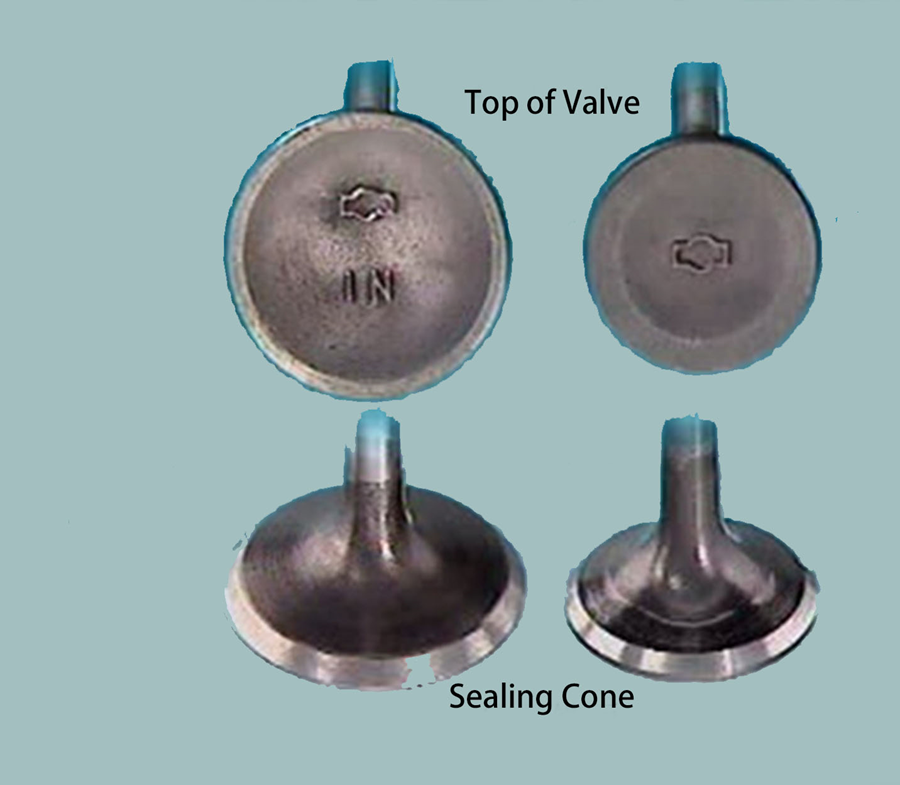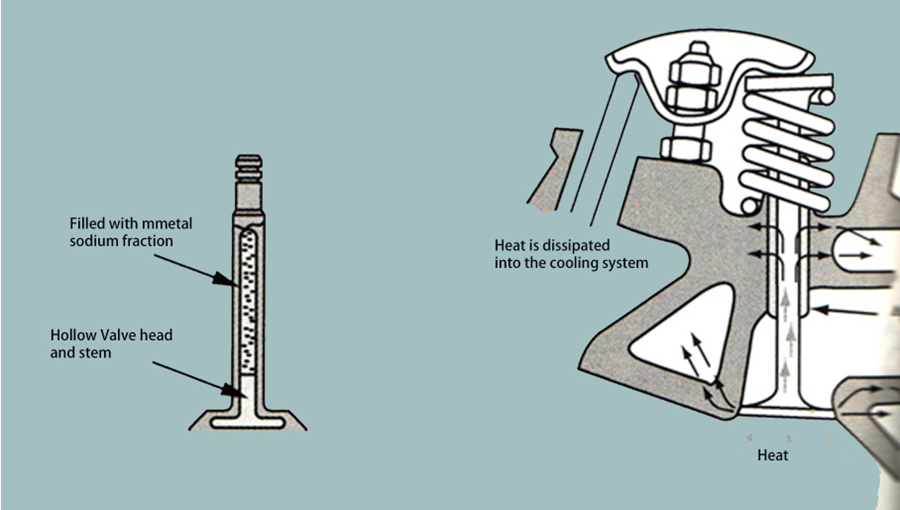Introduction
The valve stem seals keep the valve stem lubricated as
it slides within the valve guide. Low oil levels cause stems and guides to
wear out. Increased oil consumption can lead to carbon buildup, causing valve
seat damage and an early valve grind. Oil consumption may also be affected by
defective valve stem seals.
 |
| Engine valve stem seal |
Parts structure of valve group
1. The composition of the valve group
 |
| Valve composition |
The
valve is divided into two types: intake valve and exhaust valve. Its function
is to seal the intake and exhaust passages and guide the valve movement.
 |
| Valve Head and Shaft |
 |
| Structure of valve head: valve top, sealing cone |
 |
| Shape of valve top |
|
flat
top |
The
structure is simple, the manufacture is convenient, the heat-absorbing area
is small, and the quality is also small, and both intake and exhaust valves
can be used. |
|
Convex
(spherical top) |
It
is suitable for exhaust valve, because of its high strength, small exhaust
resistance, and good exhaust gas removal effect, but the spherical heating
area is large, the mass and inertial force are large, and the processing is
more complicated. |
|
Concave
top (speaker top) |
transition
part between the concave top head and the rod part has a certain streamline
shape, which can reduce the intake resistance, but the top heating area is
large, so it is suitable for the intake valve, not for the exhaust valve. |
Valve Seal Cone Surface and Valve Seal Cone Angle
1.
Valve cone angle: the angle between the cone surface of the valve head and the
valve seat ring and the top plane of the valve.
2.Cone
angle effect:
A.
Obtain larger valve seat pressure and improve sealing and thermal conductivity.
B.
When the valve is seated, it has a good centering and positioning effect.
C.
Avoid the airflow turning too large and reducing the flow rate.
D.
It can squeeze out the sediment on the contact surface and play a self-cleaning
role.
 |
| Valve seat coan angle |
 |
| Valve stem |
3. Valve seat
 |
| Valve seat |
1.
The role of the valve seat
The
cylinder is sealed by the close fit between its inner cone surface and the
valve cone surface.
Receive heat from the valve.
2.
Form of valve seat
Boring
directly in the cylinder: good heat dissipation effect, but not wear-resistant,
high temperature resistance, inconvenient to repair.
Valve
seat inlay: wear resistance, high temperature resistance, impact resistance,
poor thermal conductivity.
 |
| valve seat |
The
part where the intake and exhaust ports of the cylinder head fit with the valve
cone surface is called the valve seat). It can be directly bored on the
cylinder head, but most of them are made of heat-resistant alloy steel to make
a seat ring (called valve seat ring) and press it into the cylinder head (body)
to improve service life and facilitate maintenance and replacement.
3. Taper angle of valve seat
The
valve cone angle of some engines is 0.5-1 degrees smaller than the valve seat
cone angle, which is called the seal interference angle, which is conducive to
running-in. After the running-in period, the full cone surface contacts.
4. The fixing method of the spring seat
Manufacturer of automotive fasteners
Wuxi Gongbu Company is mainly engaged to providing fastening solution to Automotive industry, Electrical & Mechanical equipment, utility industry, Railway and wagon transportation, appliance and other industries since 1990. The main product types are square head bolts, T-bolts, hexagonal head bolts, hexagonal flange bolts, half-round head square neck bolts, half-round head oval neck bolts, U-shaped bolts, anchor bolts, rail bolts, hexagonal head wood screws , Hexagon socket head screws, hexagonal square nuts and various washers, etc.
 |
| Wuxi Gongbu Fateneing solution provider |




Comments
Post a Comment